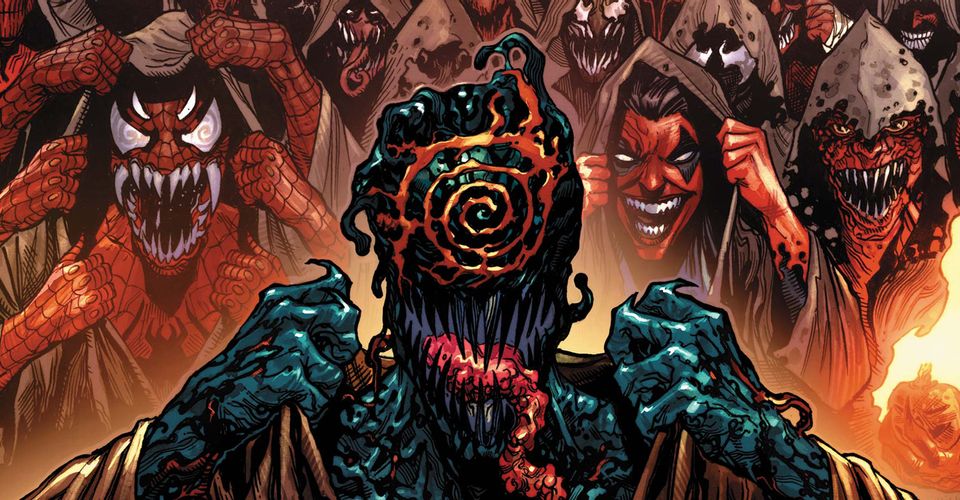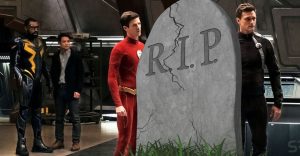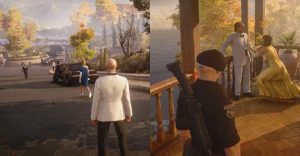Horror Writer H.P. Lovecraft’s Shadow Over Marvel Comics

Twentieth century weird-fiction writer and creator of the Cthulhu Mythos, H.P. Lovecraft has cast an ominous shadow over Marvel Comics for a half-century. The Providence-born author’s influence is subtle yet its tentacles touch the hidden corners of the Marvel Universe, from the star-spawned abominations that menace Conan the Barbarian and the Master of Mysticism, and in the disturbing Ruins of Ravencroft and the prophetic deck of The Marvel Tarot. On the 130th anniversary of weird writer’s birth, Screen Rant explores HP Lovecraft’s enduring impact on the Marvel Universe through “The Lovecraft Circle” and a swarthy barbarian from the Hyborian Age.
In the 1920s and 1930s, pulp magazines were awash in weird fiction with its supernatural horror, apocalyptic cults, and forbidden texts concealing unknown terrors yet lurking in the stars and in the dark corners of the earth. Foremost among these writers was H.P. Lovecraft, a prolific contributor to Weird Tales magazine and author of The Call of Cthulhu, At the Mountains of Madness, The Shadow Over Innsmouth, Dagon, and Whisperer in Darkness. Lovecraft’s dark and brooding tales of cosmic horror and the vast conspiracies masking hideous truths describe the writhing shoggoths from the nether regions, the Flying Fungi of Mi’go, and depraved Cthulhu cultists calling on the Elder Gods and the Great Old Ones from the outer reaches of space. These tales spawned the Cthulhu Mythos, an expanded shared-universe of eldritch evil and the supernatural constructed by a group of Depression-era writers known as “The Lovecraft Circle,” including August Derleth, Clark Ashton Smith, Psycho author Robert Bloch, and Robert E. Howard. It is through Howard, creator of Conan the Barbarian, that Lovecraft’s shadow casts its warped darkness over Marvel Comics.
Roy Thomas, acting as Stan Lee’s assistant editor at Marvel Comics, secured the rights to Robert E. Howard’s work in 1970 and brought Conan, the sword-and-sorcery hero born on the battlefield, to the Marvel Universe. Howard not only wrote swashbuckling fantasy fiction but also crafted horror tales influenced by his contemporary H.P. Lovecraft. Through Howard’s significant correspondence with Lovecraft and their extensive exchange of ideas and inspiration within “The Lovecraft Circle,” the writer would contribute the elder evil, Shuma-Gorath of the Great Old Ones to the dark mythology though the pages of Kull, a hero of pre-cataclysmic Atlantis. As Roy Thomas advanced to editor of Marvel Comics in 1972, Howard’s Conan the Barbarian, Kull the Conqueror, and puritanical Solomon Kane joined the ranks of the publisher’s comic titles … and hidden in the shadows, the Cthulhu Mythos crept in.

In 1972, Marvel Premiere: Featuring Doctor Strange, Master of the Mystic Arts launched a six-issue story arc introducing Howard’s Shuma-Gorath and the town of Starkesboro described as a “small New England town, out-of-the-way place, north of the Quabbin Reservoir.” (The Quabbin Reservoir is, coincidentally, a waterbody that covers the site of the surrealistic alien encounter immortalized in H.P. Lovecraft’s The Colour Out of Space.) A Starkesboro resident’s horrible revelations kick off Dr. Strange’s adventure and the Sorcerer Supreme learns of the town’s sinister connection to forbidden texts such as the Thanatosian Tomes, a collection merging the fictional work of Lovecraft, Howard, and heir-apparent to the weird, Roy Thomas. Early in that year, Thomas’ Conan the Barbarian introduced the Cimmerian’s spellcasting nemesis Thoth-Amon and a new wizard to be wary of, Kulan Gath. Intimation of Lovecraft’s work surface throughout Thomas’ tenure as writer and editor, in the black-and-white Savage Sword of Conan and in the Black Gods of R’lyeh from Kull the Destroyer, as the tentacles of the Cthulhu Mythos spread.
Lovecraft and his literary circle’s influence, like rumors of the Cthulhu cults themselves, waxes and wanes over the Marvel years, yet its persistence is felt lurking in the panels – sometimes in the most unexpected places. 1979’s Marvel Team-Up: Featuring Spider-Man and Red Sonja from co-plotters Chris Claremont and John Byrne brings together the unlikely duo to fight the timeless menace of Kulan Gath, intent this time on sacrificing the She-Devil with a Sword and the wallcrawler to the Elder Gods. In 1992’s Conan the Barbarian, Vol. 1, #260, Howard’s hero destroys the “iron-bound books of Shuma-Gorath” to banish the chaotic colossus when the Great Old One is summoned to the Age of Conan by the indefatigable Kulan Gath. The shadow of the Cthulhu Mythos emerges once again in 1994’s Scarlet Witch #1, in which Wanda Maximoff and Agatha Harkness journey to the crypt of a New England church in hopes of finding arcane tomes, including Lovecraft’s dread Necronomicon. And, 2007’s stylized occult compendium, The Marvel Tarot confirms the Great Old Ones and the Elder Gods as an integral part of the magical cosmology of the Marvel Universe, hidden in the stars yet an ever-present evil.

Recent themes and recurring villains in the Marvel Comics suggest the threat of the Cthulhu Mythos yet holds sway in the Marvel Universe. 2016’s Doctor Strange, “Last Days of Magic” story arc by Jason Aaron casts Shuma-Gorath as the catastrophic catalyst for the Empirikul’s anti-magic crusade that drains Earth of its arcane energy. Gerry Duggan and Patch Zircher’s ongoing Savage Avengers series resurrects the power-mad Kulan Gath and the tentacled horror of Shuma-Gorath, as the blood rites of sinister cults call the abomination to the earth once again. And, the shadow seems to be coalescing around Frank Tieri’s gothic Ruins of Ravencroft and the Web of Venom: Cult of Carnage where cosmic horror reign and unspeakable rituals feed the elder evils of the universe, and cultists await their return across time and space.
Lovecraft and the influence of theCthulhu Mythosare rising on the 130th anniversary of the writer’s birth this year, beyond comic books and into mainstream popular culture. Film and video games are teeming with tendrils and supernatural terrors reminiscent of the myths, as illustrated in the Hellboy franchise and 2019’s The Lighthouse, while animation has embraced the evil openly with Homer Simpson challenging the great Cthulhu to an eating contest and Rick and Morty fleeing the winged monstrosity in the opening credits of the series. And, Netflix’s Stranger Things wears its Lovecraftian influence on its sleeve, particularly in season 3 and the Battle of the Starcourt. HBO’s hit Lovecraft Country is the most recent interpretation, contrasting cosmic horror with the everyday terror of “sundown towns” and the human-monsters of the world. And, the fear is palpable. H.P. Lovecraft once wrote, “The oldest and strongest emotion of mankind is fear, and the oldest and strongest kind of fear is fear of the unknown.” Yet sometimes, the fear one can see and recognize for what it is may be the most terrifying.
About The Author















